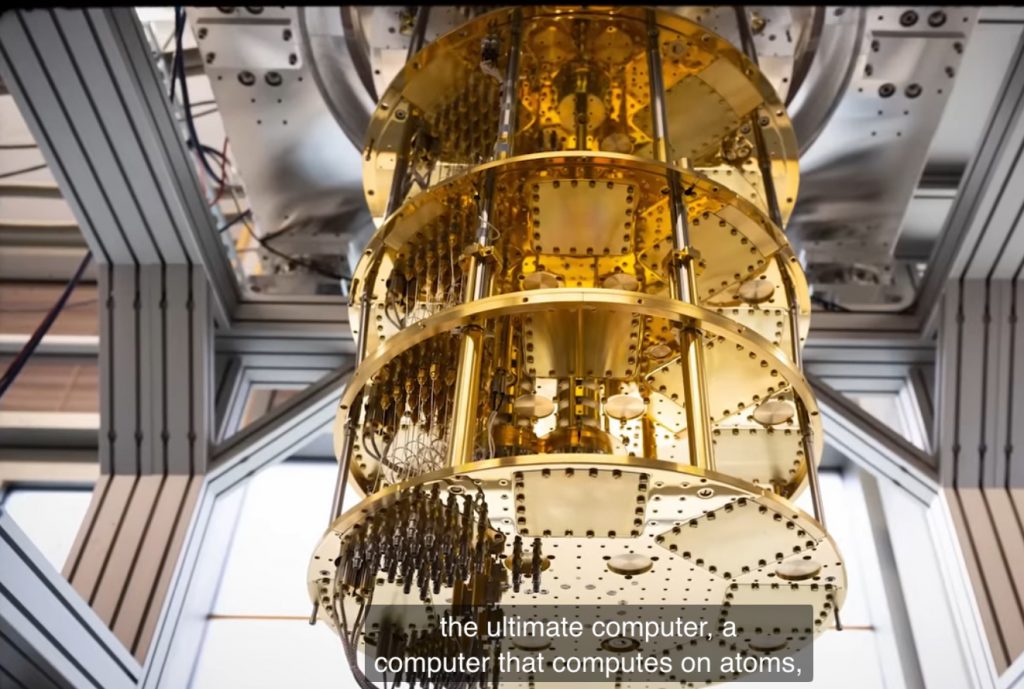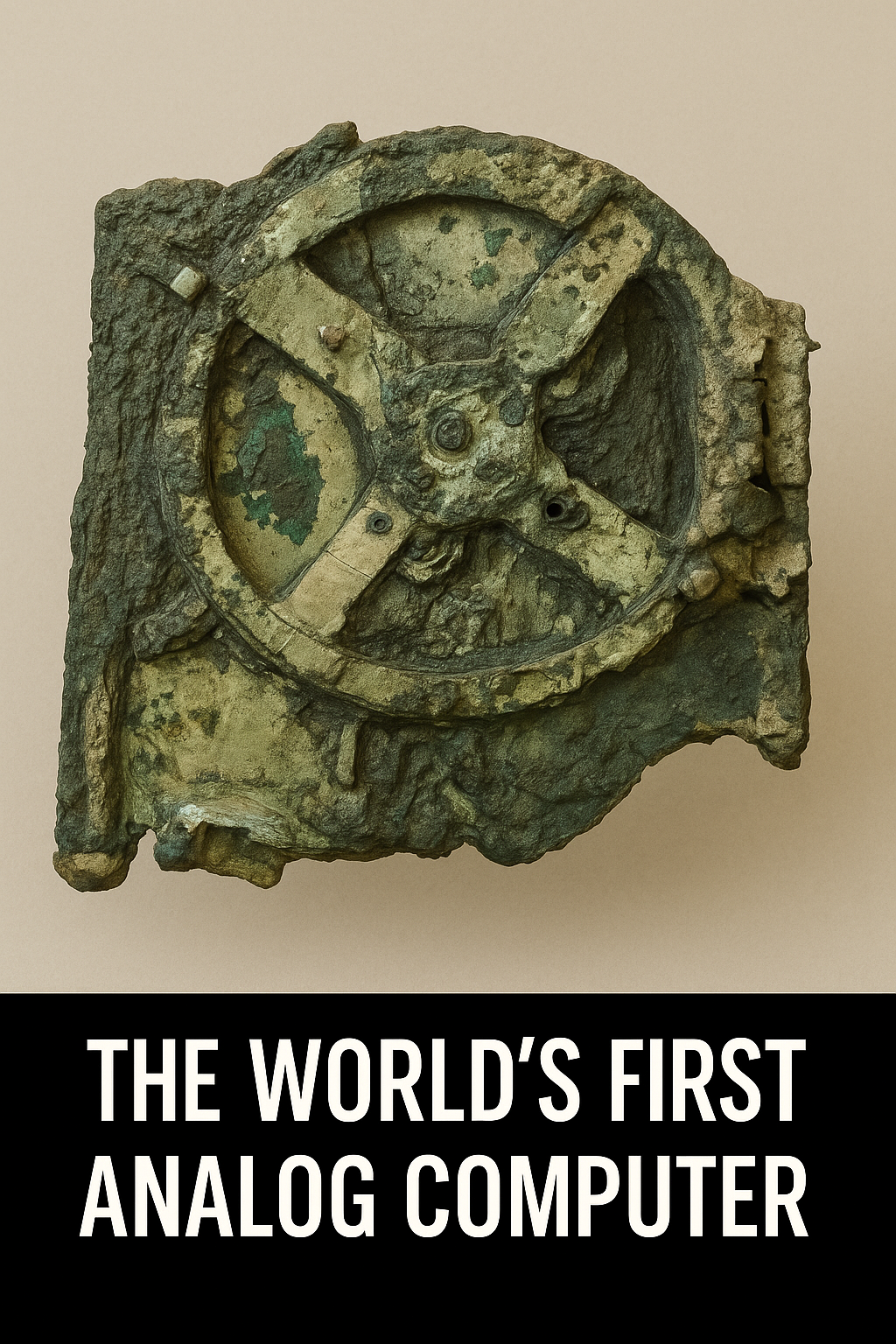How the Ultimate Computer Could Change Everything
One summer afternoon in 1901, divers exploring the ruins of an ancient Greek shipwreck off the coast of Antikythera stumbled upon something strange: a lump of corroded bronze gears encrusted with barnacles. For months it sat ignored in a museum, until one day someone noticed that this wasn’t a statue or a weapon. It was a machine.

When researchers cleaned away the centuries of grime, they realized what they had found: the world’s first analog computer. Built over two thousand years ago, this intricate device could predict eclipses, track the movements of planets, and simulate the heavens themselves. It was a mechanical window into the cosmos, long before the telescope was even dreamed of.
That mysterious machine marked humanity’s first steps into computing. And today, on the shoulders of centuries of innovation—from gears and levers to transistors and microchips—we now stand on the edge of an even greater leap: the era of quantum computers.

⸻
From Sticks and Gears to Silicon Chips
For millennia, humans counted with pebbles, sticks, and bones. Then, in the 1800s, Charles Babbage designed the first true mechanical calculators, machines of brass and steel that could compute interest rates or map ocean navigation routes with astonishing accuracy for their time.
But when World War II erupted, Babbage’s gears and pulleys were far too slow to break Germany’s secret codes. Enter Alan Turing, the mathematical genius who helped crack the Enigma code and laid the foundations of digital computing.
Turing’s machines replaced gears with electricity. Information was no longer stored in cogs and wheels but in a simple language of zeros and ones. The transistor—tiny switches controlling the flow of electrons—powered this revolution. Everything we know today—smartphones, the Internet, artificial intelligence—rests on this digital foundation.
And yet, as powerful as they are, digital computers are about to meet their match.
⸻
Enter the Quantum World
In the 1980s, Nobel-winning physicist Richard Feynman asked a simple but profound question: How small can we make a computer?
The answer took him to the very building blocks of reality—atoms and subatomic particles. If classical computers run on electricity and bits, Feynman realized that the ultimate computer would run on the strange, almost magical rules of quantum mechanics—the science of the very small.
Unlike a digital bit, which can be either 0 or 1, a quantum bit—or qubit—can be 0, 1, or both at the same time. This bizarre property, called superposition, means a quantum computer doesn’t just perform one calculation at a time. It explores countless possibilities simultaneously, as if computing across multiple parallel universes at once.
Mother Nature herself has always been the ultimate quantum computer, effortlessly performing calculations at the atomic and molecular level that even our most powerful digital supercomputers cannot begin to replicate. Life processes such as photosynthesis, protein folding, and molecular self-assembly operate through quantum principles like coherence and superposition—phenomena beyond the reach of classical computation. This is why today’s digital machines, no matter how fast, cannot fully model the molecular chaos underlying devastating diseases like Alzheimer’s, Parkinson’s, or cancer. Yet, quantum computers, harnessing the same principles Nature uses, promise to unlock these mysteries by simulating molecular interactions with unprecedented precision. They hold the potential not only to decipher the roots of these illnesses but also to design cures atom by atom, ushering in a medical revolution that mirrors the elegance and power of Nature’s own computations.
This is why scientists say quantum computers could solve problems that would take today’s fastest supercomputers millions of years to crack.
⸻
Why Governments and Tech Giants Are Racing
Quantum computers are not just faster calculators; they are potential game-changers for nearly every field:
- Cybersecurity: Today’s digital codes rely on math so hard that even supercomputers can’t break them. A powerful quantum computer could crack those codes in minutes. Governments know this—and that’s why the FBI, CIA, and security agencies worldwide are watching closely.
- Medicine: Diseases like Alzheimer’s and cancer arise from complex molecular interactions that digital computers struggle to model. Quantum computers could simulate entire molecules and help design cures at the atomic level.
- Energy: From clean fusion power to artificial photosynthesis for sustainable fuel, quantum simulations could unlock energy solutions we can’t even dream of today.
- Climate & Food: Modeling global climate or creating fertilizers from air—tasks beyond the reach of today’s machines—may soon be possible.
And ultimately, physicists hope quantum computers might help solve the biggest mystery of all: a single theory explaining the entire Universe, from black holes to the Big Bang.
⸻
The Challenge: Taming the Quantum Beast
But there’s a catch. Quantum states are fragile. The slightest vibration, a flicker of heat, even cosmic rays from space can destroy their delicate coherence—the synchronized harmony that makes quantum computation possible.
That’s why most quantum machines today operate near absolute zero, colder than outer space itself. Nature, intriguingly, has already mastered this trick: photosynthesis in plants exploits quantum effects at room temperature, something scientists are still struggling to imitate.
This problem, called decoherence, is the single biggest roadblock. Yet, year after year, labs at Google, IBM, China, Europe, and countless startups are inching closer to stable, large-scale quantum computers.
⸻
A Revolution Waiting to Happen
In 2019, Google announced it had achieved “quantum supremacy”—solving a problem no classical supercomputer could tackle in a reasonable time. It was a small, symbolic milestone, like the Wright brothers’ first flight at Kitty Hawk. The plane barely left the ground, but it changed history.
We are at a similar moment. Quantum computers haven’t yet reshaped daily life, but the foundations are here. The next decade could see breakthroughs as transformative as the Internet or electricity itself.
When that happens, the leap from sticks and bones to digital silicon will look tiny compared to the leap from digital reality to quantum reality.
⸻
The Quantum Future
Imagine a world where:
- Drug discovery happens in days, not decades.
- Clean energy fuels entire cities with no pollution.
- Cybersecurity becomes unbreakable—or obsolete.
- Climate models run with atomic-level precision.
- A single theory unites the cosmos under one framework.
This is the promise of quantum computing—a promise still under construction, but closing in fast
